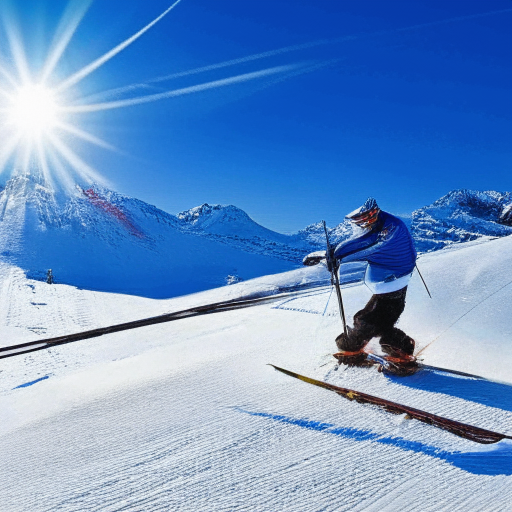Protect Your Vision: Comprehensive Insights on Snow Blindness and Effective Preventive Measures
As the captivating winter season transforms landscapes into stunning white vistas, it becomes imperative to acknowledge the potential hazards associated with outdoor activities in snowy environments. Among these dangers, snow blindness stands out as a temporary yet extremely painful condition that arises from excessive exposure to ultraviolet (UV) rays reflecting off snow. This detailed blog post explores the intricate science behind snow blindness, assesses the effects of sunlight bouncing off snow, and offers practical strategies for prevention, accurate diagnosis, and appropriate treatment. By gaining a deeper understanding of the underlying causes of this condition and embracing protective measures, we can relish the beauty of winter while safeguarding our eye health.

Understanding Snow Blindness: Medical Definitions and Underlying Causes of This Eye Condition
The medical terminology for snow blindness is photokeratitis, which refers to a temporary injury to the cornea, the eye's outermost protective layer. This painful condition primarily occurs due to excessive exposure to elevated levels of ultraviolet (UV) radiation, particularly the rays that bounce off snow-covered surfaces. The intensity of sunlight, especially at higher altitudes where the atmosphere is thinner, can cause considerable discomfort and can even lead to long-term vision issues in certain cases. While snow blindness often resolves itself within a short time frame, it is crucial to deeply understand its triggers to implement effective prevention and management strategies, ensuring long-lasting eye health for all outdoor enthusiasts.
Exploring the Effects of Sunlight on Snow and Its Impact on Eye Health
To fully comprehend the intricacies of snow blindness, it is essential to investigate how sunlight interacts with the surface of the snow. Sunlight passes through the atmosphere and encompasses various wavelengths, including harmful ultraviolet radiation. When these rays strike a snow-covered landscape, the unique reflective properties of snow can reflect up to 80% of these UV rays, significantly escalating exposure levels. This reflection effect is particularly pronounced in elevated regions, where the atmosphere's ability to filter UV radiation is notably diminished. As a result, the eyes can quickly become inundated with excessive UV exposure, leading to potential damage to critical components such as the cornea and conjunctiva, both vital for maintaining optimal vision.
Identifying the Symptoms of Snow Blindness for Timely Intervention
The symptoms of snow blindness typically emerge several hours after exposure to intense UV light. The severity of symptoms can vary widely among individuals, but common indicators include:
Eye discomfort and pain: Many individuals describe a gritty sensation or an uncomfortable feeling akin to having foreign objects in their eyes.
Redness and swelling: The eyes may appear bloodshot, with eyelids potentially swelling and showing signs of inflammation.
Watery eyes: The body reacts by producing tears to wash out irritants and alleviate discomfort.
Blurry vision: Activities requiring clear sight, such as reading or driving, may become challenging due to visual distortion.
Sensitivity to light: An increased sensitivity to light, known as photophobia, often occurs alongside headaches.
Visual halos: Some individuals may perceive bright rings or halos around light sources, contributing to visual confusion and discomfort.
Proactive Steps to Shield Your Eyes from Snow Blindness
When it comes to safeguarding your eyes from the harmful effects of UV exposure, taking proactive measures is far more effective than seeking remedies after symptoms arise. Here are several practical strategies to help you minimize the risk of snow blindness:
Select appropriate eyewear: Always choose goggles or sunglasses that block 100% of UV rays when venturing into snowy environments. Look for eyewear labeled with UV400 or 100% UV protection for optimal safety.
Opt for wraparound styles: Select sunglasses or goggles that wrap around the sides of your face to ensure comprehensive protection against both direct sunlight and side UV exposure.
Utilize wide-brimmed hats: Hats with wide brims or neck flaps can provide additional shade, significantly reducing UV exposure to your eyes and face.
Monitor the UV Index: Before participating in outdoor activities, check the local UV Index, which indicates daily UV exposure levels. Be cautious about limiting sun exposure during peak hours, typically between 10 AM and 4 PM.
Apply sunscreen effectively: Though it may seem unrelated, applying sunscreen around your face and eyes can significantly lower UV exposure, enhancing your overall eye protection.
Take regular breaks indoors: If planning to spend extended periods in snowy areas, make a habit of taking breaks indoors to allow your eyes to rest and recover from bright light exposure.
Effective Relief Strategies for Recovery from Snow Blindness Symptoms
If you find yourself experiencing the uncomfortable symptoms of snow blindness despite taking preventive measures, several strategies can help alleviate discomfort and promote recovery:
Seek shade immediately: Retreating to a darkened area or indoors can protect your eyes from further UV exposure and minimize discomfort.
Remove contact lenses: If you wear contact lenses, it is advisable to take them out to prevent additional irritation and facilitate proper recovery of your eyes.
Apply cold compresses: Placing a cold, damp towel over your closed eyes can effectively soothe discomfort and reduce swelling associated with this condition.
Use artificial tears: Over-the-counter artificial tears can provide temporary relief, keeping your eyes lubricated and alleviating dryness caused by snow blindness.
Avoid bright lights: Limiting exposure to intense light sources, including screens and overhead lighting, can lessen the effects of photophobia during recovery.
Rest your eyes diligently: Engage in minimal visual strain activities, avoiding reading or screen time, to give your eyes the essential time they need to heal properly.
Recognizing When to Seek Professional Medical Advice for Snow Blindness
In most cases, the symptoms of snow blindness will begin to diminish within 24 to 48 hours as the cornea undergoes natural healing. However, it is critical to seek medical attention if symptoms worsen or persist, as delays in treatment could lead to complications or secondary infections that may threaten your vision.
Experiencing snow blindness can significantly detract from the enjoyment of winter activities, but with informed knowledge and precautionary measures, we can greatly reduce the risk while fully immersing ourselves in the enchanting beauty of snowy landscapes. Stay vigilant about UV radiation levels, take regular breaks in shaded areas, and always prioritize wearing protective eyewear. Should symptoms arise, seek relief promptly and consult a healthcare professional if necessary. By making eye safety a priority, you can completely enjoy the winter wonderland and create lasting memories without compromising your vision. Embrace your winter adventures with caution and awareness!
The post Snow Blindness: Understanding Its Causes and Effects appeared first on Survival Bite.
The Article Snow Blindness Causes and Effects Explained Was Found On https://limitsofstrategy.com
The Article Snow Blindness: Understanding Its Causes and Effects First Appeared ON
: https://ad4sc.com














